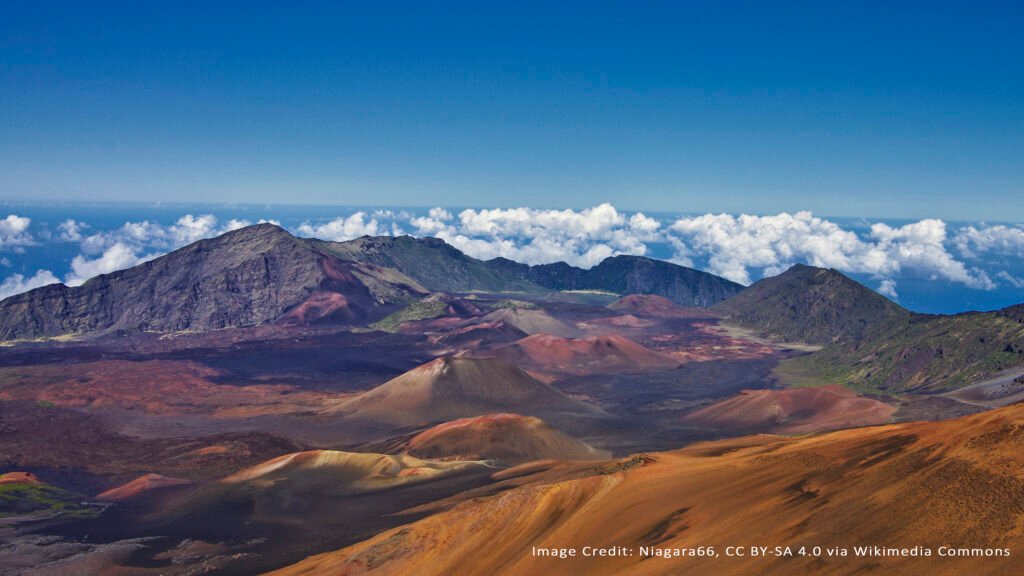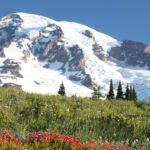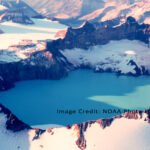Discover Haleakala National Park in Maui with our comprehensive guide. Explore the breathtaking Haleakala Crater, enjoy sunrise views, hiking trails, and nearby attractions like the Road to Hana. Plan your visit to this top Hawaiian destination today!
Table of Contents
1. Introduction to Haleakala National Park
Nestled on the stunning island of Maui, Haleakala National Park is one of Hawaii’s most breathtaking destinations. Known as the “House of the Sun,” this incredible park offers visitors the chance to experience nature in its purest form. From witnessing a legendary Haleakala sunrise to exploring its vast volcanic landscapes, this park is a must-visit for nature lovers, adventurers, and stargazers alike.
The park’s centerpiece, the Haleakala Crater, is a dormant volcano that stretches across an awe-inspiring 7 miles. Its lunar-like terrain and colorful rock formations make it feel like you’ve stepped onto another planet. But Haleakala isn’t just about its unique geology; it’s also home to an extraordinary range of plants and wildlife, some of which are found nowhere else on Earth.
Whether you’re hiking along the crater, stargazing under some of the clearest skies in the world, or simply taking in the panoramic views from the summit, Haleakala National Park offers unforgettable experiences for every kind of traveler. Planning your trip? Keep reading to discover the best time to visit Haleakala National Park, the top things to do, and essential tips to make the most of your adventure.
This magical destination has something for everyone, making it one of the top attractions in Hawaii. Start your journey to Haleakala National Park today and get ready for an adventure of a lifetime!
2. How to Get There
Getting to Haleakala National Park is an adventure in itself, offering scenic drives and stunning views as you ascend to one of Hawaii’s most iconic destinations. Located on the island of Maui, the park is easily accessible by car and is divided into two main areas: the Summit District and the Kipahulu District. Here’s everything you need to know to plan your visit.
Driving to Haleakala Summit
The Haleakala Summit is one of the park’s most popular destinations, particularly for those planning to witness the breathtaking Haleakala sunrise. To get there:
- From Kahului Airport, it’s a 60–90 minute drive via Haleakala Highway (Highway 37) and Crater Road (Highway 378).
- The drive takes you through lush forests and winding roads, climbing nearly 10,000 feet to the summit.
- Be prepared for hairpin turns and significant temperature drops as you ascend.
If you’re driving yourself, arrive early—especially if you’re planning to see the sunrise, as reservations are required. Alternatively, consider joining a Haleakala sunrise tour to avoid the hassle of navigating in the dark.
Reaching the Kipahulu District
The park’s Kipahulu District, located on the southeastern side of Maui, is a separate area known for its lush landscapes and the famous Pipiwai Trail. To reach Kipahulu:
- Take the Road to Hana, a scenic coastal route with waterfalls, rainforest views, and narrow bridges.
- From Kahului, it’s a 2.5–3 hour drive, so plan accordingly.
This area does not connect directly to the Summit District, so you’ll need to visit them on separate trips unless you’re staying overnight.
Transportation Options
- By Car: Renting a car is the most convenient way to explore Haleakala National Park, offering flexibility to stop at viewpoints along the way.
- Tours: Guided tours are available for those who prefer to sit back and enjoy the ride. Options include sunrise tours, stargazing tours, or full-day excursions that cover both districts.
- Cycling: Adventurous travelers can bike down from the summit with tour companies offering guided cycling experiences.
Tips for a Smooth Journey
- Plan for Elevation: The drive to the summit climbs over 10,000 feet, so be cautious if you’re sensitive to high altitudes.
- Fuel Up: There are no gas stations in the park, so fill up your tank beforehand.
- Check the Weather: Weather conditions at the summit can change rapidly; bring warm clothing and check for closures before you go.
3. Best Time to Visit Haleakala National Park
Visiting Haleakala for Sunrise
If your goal is to witness the famous Haleakala sunrise, the early morning hours are obviously the best time to visit. The experience of watching the sun emerge above a sea of clouds is unlike anything else, but it does require some planning:
- Reservations: A Haleakala sunrise reservation is mandatory and must be made in advance through the National Park Service website. Slots fill up quickly, so book early!
- Timing: Aim to arrive at least 30 minutes before sunrise to secure a good viewing spot. Depending on the season, sunrise times range from 5:30 AM to 6:30 AM.
Seasonal Guide to Haleakala National Park
- Spring (March to May)
Spring offers mild weather and fewer crowds, making it an excellent time to explore the park’s hiking trails like the Haleakala Crater hike or the Pipiwai Trail in the Kipahulu District. Wildflowers are in bloom, adding vibrant colors to the volcanic landscape. - Summer (June to August)
Summer is a popular time to visit Haleakala, especially for families on vacation. The weather is warm and dry, ideal for outdoor activities. However, expect higher visitor numbers, particularly at sunrise and sunset viewpoints. Plan to arrive early to beat the crowds. - Fall (September to November)
For those looking to avoid the peak tourist season, fall is one of the best times to visit Haleakala National Park. The weather remains pleasant, and the park is quieter, allowing for a more peaceful experience. It’s also a great time for Haleakala stargazing, as the skies are often clear. - Winter (December to February)
Winter brings cooler temperatures, especially at the summit, where it can drop below freezing at night. This season is perfect for stargazing and enjoying dramatic views of the crater. Keep in mind that holiday periods can attract more visitors, so plan accordingly.
Time of Day: Sunrise, Sunset, and Stargazing
- Sunrise: The most iconic experience at Haleakala, drawing visitors for its breathtaking beauty.
- Sunset: Often less crowded than sunrise but equally stunning, with the crater bathed in golden light.
- Nighttime: Haleakala is a designated International Dark Sky Park, making it one of the top locations in the world for stargazing. Bring a blanket, dress warmly, and marvel at the Milky Way.
Tips for Choosing the Best Time to Visit
- Check the Weather: Conditions at the summit can be unpredictable, with wind, rain, or clouds affecting visibility. Use a weather app or check park updates before heading out.
- Arrive Early: To avoid crowds, visit during weekdays or early in the morning for sunrise and hiking.
- Dress in Layers: Temperatures can vary dramatically, especially at higher elevations. Bring warm clothing regardless of the season.
4. Top Things to Do in Haleakala National Park
Witness the Haleakala Sunrise
A visit to Haleakala isn’t complete without seeing its world-famous sunrise. Watching the sun rise above the clouds at nearly 10,000 feet is a magical experience that draws visitors from around the globe.
- Reservations Required: Secure your spot in advance through the National Park Service website. Slots are limited and fill up fast.
- Arrive Early: Get to the summit at least 30 minutes before sunrise to find a good viewing location.
- Pro Tip: Dress warmly! Temperatures can drop below freezing at the summit, even in summer.
Explore the Haleakala Crater
The Haleakala Crater is one of the park’s most iconic features, resembling a moonscape with its colorful cinder cones and rugged terrain.
- Sliding Sands Trail (Keoneheʻeheʻe Trail): This challenging hike takes you into the heart of the crater, offering stunning views of volcanic formations.
- Halemau‘u Trail: Another popular trail with breathtaking overlooks and opportunities to see native flora like the silversword plant.
- Tip for Hikers: Bring plenty of water, sunscreen, and sturdy shoes, as trails can be steep and exposed to the sun.
Stargazing Under the Dark Skies
As an International Dark Sky Park, Haleakala offers some of the clearest night skies in the world. Stargazing here is a surreal experience, with millions of stars, constellations, and even the Milky Way visible to the naked eye.
- Best Time: Visit on a clear, moonless night for optimal viewing conditions.
- Bring Gear: A telescope or binoculars can enhance your experience, but even without them, the skies are mesmerizing.
- Stargazing Tours: Join a guided stargazing tour to learn about Hawaiian celestial navigation and astronomy.
Take a Scenic Drive to the Summit
The drive to Haleakala’s summit is an adventure in itself, featuring winding roads, panoramic views, and diverse landscapes.
- Must-See Stops: Pull over at Kalahaku Overlook and Leleiwi Overlook for incredible photo opportunities.
- Cycling Option: For thrill-seekers, consider biking down from the summit with a guided tour.
Discover the Kipahulu District
The lush Kipahulu District, located on the southeastern side of the park, offers a completely different experience.
- Pipiwai Trail: Hike through a bamboo forest to the stunning Waimoku Falls.
- Pools of ‘Ohe‘o: Also known as the Seven Sacred Pools, these picturesque pools are perfect for photography (swimming is currently prohibited).
- How to Get There: Drive along the scenic Road to Hana for a journey filled with waterfalls and coastal views.
Learn About Native Plants and Wildlife
Haleakala is home to rare and endemic species, making it a haven for nature enthusiasts.
- Silversword Plant (ʻĀhinahina): This silver-colored plant is unique to Haleakala and blooms only once in its lifetime.
- Nēnē (Hawaiian Goose): Keep an eye out for Hawaii’s state bird as you explore the park.
Camping in Haleakala National Park
For an immersive experience, spend the night under the stars at one of the park’s designated campgrounds.
- Options: Choose between Hosmer Grove (near the summit) or Kipahulu Campground (in the lush coastal district).
- Permits: While camping is free, permits may be required for backcountry camping.
Tips for Enjoying Haleakala National Park
- Pack Essentials: Bring water, snacks, sunscreen, and warm clothing regardless of your activity.
- Start Early: Arriving early helps you avoid crowds and maximize your time in the park.
- Respect Nature: Follow Leave No Trace principles to preserve this unique environment.
Click here to visit the official park website.
5. Haleakala Crater Experience
What Makes Haleakala Crater Unique?
The crater is a geological masterpiece shaped by centuries of volcanic activity and erosion. Its seemingly barren surface hides vibrant hues of red, orange, and gray, while rare plants like the Haleakala silversword thrive in this extreme environment. Standing on the edge of the crater, you’ll feel the sheer power of nature and the incredible scale of the volcanic forces that created Maui.
Best Ways to Explore the Haleakala Crater
- Hiking the Crater Trails
The best way to immerse yourself in the crater’s beauty is to hike its trails. Popular options include:- Sliding Sands Trail (Keoneheʻeheʻe Trail): This challenging trail takes you into the heart of the crater, offering surreal views of its colorful cinder cones and lava rock formations. The full trail is about 11 miles round trip, but shorter hikes are also possible.
- Halemau‘u Trail: This moderately challenging trail offers panoramic views of the crater from its rim, with opportunities to spot native plants and wildlife. It’s an excellent alternative for those who prefer shorter hikes.
Tips for Hikers
- Wear sturdy hiking boots, as the trails are rocky and uneven.
- Bring plenty of water and snacks, as the crater environment can be dry and hot.
- Use sunscreen and hats for protection from the sun, as shade is limited.
- Scenic Viewpoints
If hiking isn’t for you, the crater can still be enjoyed from several overlooks:- Kalahaku Overlook: This viewpoint offers stunning vistas of the crater’s colorful floor and surrounding landscapes.
- Leleiwi Overlook: A quieter spot with breathtaking views, perfect for photography or quiet reflection.
- Haleakala Summit: The summit area provides panoramic views of the entire crater and is a must-visit for sunrise or sunset.
- Photography Opportunities
The crater’s surreal landscape is a dream for photographers. Capture the vibrant colors of the volcanic soil, the contrasting textures of the cinder cones, and the dramatic shadows cast during sunrise and sunset.
Wildlife and Flora in the Crater
Despite its harsh conditions, the Haleakala Crater is home to unique flora and fauna:
- Haleakala Silversword (ʻĀhinahina): This rare plant, found only on the slopes of Haleakala, thrives in the crater’s rocky soil. It blooms just once in its lifetime before dying, making it a special sight for visitors.
- Nēnē (Hawaiian Goose): Spot Hawaii’s state bird, the nēnē, which often nests in the area. Remember to maintain a respectful distance and avoid feeding them.
Tips for Enjoying the Haleakala Crater Experience
- Dress in Layers: Temperatures in the crater can be significantly cooler than at lower elevations, especially in the morning or evening.
- Start Early: Arrive early to enjoy quieter trails and viewpoints before the crowds arrive.
- Respect the Environment: Stay on designated trails to protect the fragile ecosystem and avoid damaging the unique plants.
Why the Haleakala Crater is a Must-Visit
The Haleakala Crater experience combines dramatic landscapes, fascinating geology, and rare wildlife, making it one of the most unique attractions in Hawaii. Whether you’re hiking through its alien-like terrain or marveling at its vastness from a scenic overlook, the crater offers a connection to nature that you won’t find anywhere else.
6. Practical Tips for Visiting Haleakala National Park
Make a Sunrise Reservation
If witnessing the iconic Haleakala sunrise is on your bucket list, remember that reservations are mandatory for sunrise viewing. Here’s what you need to know:
- Booking: Reservations open 60 days in advance on the National Park Service website, and they sell out quickly, so book early.
- Entry Times: Arrive during the designated entry time (typically between 3:00 AM and 7:00 AM). Late arrivals may not be permitted.
- Pro Tip: Even without a reservation, you can still visit the summit later in the day for equally stunning views or at sunset.
Dress for the Weather
The weather in Haleakala National Park can vary dramatically due to its high elevation:
- Layer Up: Temperatures at the summit can drop to near freezing, even in summer. Dress in layers so you can adjust as needed.
- Bring Rain Gear: Sudden rain showers are common, especially in the Kipahulu District. A waterproof jacket can come in handy.
- Wear Comfortable Shoes: If you’re hiking, sturdy hiking boots are a must for navigating the rocky and uneven terrain.
Pack Essentials
The remote location and rugged environment of Haleakala require careful preparation. Here’s what to pack:
- Water and Snacks: There are no food or drink vendors inside the park. Bring plenty of water to stay hydrated, especially if you’re hiking.
- Sunscreen and Sunglasses: The sun’s UV rays are stronger at higher elevations, so protect your skin and eyes.
- Binoculars or a Telescope: For stargazing or spotting distant landmarks in the crater.
- Map or Guidebook: Cell service is limited in the park, so it’s a good idea to carry a physical map or download one before arriving.
Check the Weather and Conditions
Before heading to the park, check the latest weather updates and park conditions:
- Park Alerts: Visit the National Park Service website for updates on road closures, trail conditions, or weather advisories.
- Summit Weather: Be prepared for strong winds, cold temperatures, and limited visibility due to fog or clouds.
Plan Your Timing
- Arrive Early: Whether it’s for sunrise, hiking, or general exploration, arriving early helps you avoid crowds and secure parking.
- Allocate Time for Driving: The drive to the summit takes about 1.5–2 hours from Kahului, with winding roads that require cautious driving.
Respect the Environment
Haleakala National Park is home to a fragile ecosystem, so follow these tips to protect its natural beauty:
- Stay on Trails: Wandering off marked paths can damage native plants, including the endangered Haleakala silversword.
- Pack Out Your Trash: There are limited facilities for waste disposal, so take all your trash with you.
- Avoid Feeding Wildlife: Feeding animals like the nēnē (Hawaiian goose) disrupts their natural behavior and can harm their health.
Prepare for Altitude
The summit of Haleakala is over 10,000 feet above sea level, and the high altitude can affect visitors:
- Take It Slow: If you feel dizzy or lightheaded, rest and hydrate.
- Consult a Doctor: Those with pre-existing health conditions should check with a physician before visiting high altitudes.
Consider Guided Tours
If navigating the park on your own feels daunting, consider joining a guided tour:
- Sunrise Tours: Avoid the hassle of driving in the dark and let a professional guide you to the summit.
- Hiking Tours: Learn about the park’s unique geology and wildlife from an experienced guide.
- Stargazing Tours: Expert-led stargazing experiences are available for those looking to explore the park’s Dark Sky designation.
Fuel Up Before You Go
There are no gas stations inside Haleakala National Park, so make sure to fill up your vehicle before entering. The last gas stations are located in towns like Kahului and Pukalani.
Check Park Fees
The entrance fee for Haleakala National Park is valid for three days. If you’re planning to visit other national parks during your trip, consider purchasing an America the Beautiful Pass, which grants access to all U.S. national parks for a year.
Final Tips
- Plan for Two Visits: If time permits, visit the park twice—once for sunrise or sunset and once for hiking or exploring the Kipahulu District.
- Pack a Camera: The surreal landscapes of the Haleakala Crater, the lush trails of Kipahulu, and the breathtaking views at the summit make for incredible photo opportunities.
7. Nearby Attractions
Road to Hana
The Road to Hana is a scenic drive that takes you along Maui’s rugged eastern coast, featuring lush rainforests, towering waterfalls, and dramatic cliffs. This world-famous road trip is an essential Maui experience and a perfect complement to a visit to Haleakala.
- Highlights:
- Wailua Falls: A stunning 80-foot waterfall, easily accessible from the road.
- Seven Sacred Pools (Pools of ‘Ohe‘o): Located in Kipahulu District of Haleakala National Park, these picturesque pools are perfect for a hike or a peaceful stop.
- Black Sand Beaches: Explore the unique black sand at Waianapanapa State Park.
Upcountry Maui
Located near the summit of Haleakala, Upcountry Maui is a region known for its cooler temperatures, scenic landscapes, and charming small towns.
- Makawao: This former paniolo (cowboy) town has a unique blend of ranching culture and art galleries.
- Kula: A peaceful area known for its farms, gardens, and views of the island. Visit the Kula Botanical Garden or Ali’i Kula Lavender Farm for a tranquil experience.
- Maui Wine: Enjoy a tour and tasting at this Upcountry vineyard, where you can sample local wines made from Maui-grown fruits.
Lahaina Town
Once the capital of the Hawaiian Kingdom, Lahaina is a historic town full of charm, culture, and coastal beauty.
- Front Street: Stroll down Lahaina’s main street, lined with shops, restaurants, and art galleries.
- Banyan Tree Park: This famous tree, planted in 1873, is the largest of its kind in the U.S. and provides plenty of shade for visitors to relax.
- Lahaina Historic District: Explore the many historic buildings, including the Baldwin Home Museum and Old Lahaina Courthouse.
Iao Valley State Park
A short drive from Kahului, Iao Valley State Park offers a glimpse into Maui’s lush interior. Known for its towering emerald peaks, the park is both historically significant and visually striking.
- Iao Needle: A needle-shaped rock formation that rises 1,200 feet above the valley floor.
- Iao Stream: A peaceful stream flowing through the valley, perfect for a tranquil walk or nature photography.
- Hiking: Explore the Iao Needle Lookout Trail for panoramic views of the valley and surrounding mountains.
Makena Beach State Park
For those looking to relax on some of Maui’s best beaches, Makena Beach (also known as Big Beach) is a must-see. This wide, sandy beach offers stunning views of the neighboring Molokini Crater and is perfect for swimming, sunbathing, or beach picnicking.
- Little Beach: A short walk from Big Beach, this secluded beach is known for its serene atmosphere and clothing-optional policy.
- Snorkeling: Take a short boat ride from the shore to explore the underwater world around Molokini Crater, a crescent-shaped island known for its crystal-clear waters and vibrant marine life.
Molokini Crater
Located just off the coast of Maui, Molokini Crater is a unique crescent-shaped volcanic caldera that’s become a world-renowned snorkeling and diving destination.
- Snorkeling and Diving: The crystal-clear waters offer visibility up to 150 feet, making it one of the best places in Hawaii to explore underwater life.
- Marine Life: Expect to see a variety of colorful fish, rays, and possibly even sea turtles.
Haleakala National Park’s Kipahulu District
If you haven’t explored the Kipahulu District yet, it’s definitely worth another visit or a longer stay. This lush district is full of waterfalls, hiking trails, and native Hawaiian culture.
- Pipiwai Trail: A gorgeous trail that leads you through a bamboo forest to the towering Waimoku Falls.
- Kipahulu Campground: Spend the night camping in this tranquil, tropical part of the park, surrounded by waterfalls and forests.
Tips for Exploring Nearby Attractions
Combine Your Visits: Plan your day so that you can visit Haleakala National Park in the morning and head out to one or two nearby attractions in the afternoon.
Allow Extra Time: Some of the scenic drives, like the Road to Hana, can take several hours, so plan your itinerary accordingly.
Bring Snacks and Water: Many of these attractions are in remote areas with limited facilities, so stock up on food and water before heading out.
Respect Nature: Always follow Leave No Trace principles, especially in sensitive areas like Molokini Crater and Iao Valley.
In conclusion, Haleakala National Park is a must-see destination in Maui that offers a mix of adventure, beauty, and serenity. Whether you’re admiring the views from the summit or hiking through the crater’s unique terrain, this park provides an unparalleled opportunity to connect with the natural world. Start planning your trip today and discover why Haleakala is one of Hawaii’s most beloved landmarks!
You may also like Hawaii Volcanoes National Park: Hiking, Lava Viewing & More








1 thought on “Explore Haleakala National Park: Ultimate Guide to Maui’s Volcanic Wonders, Sunrise, and Hiking Trails”